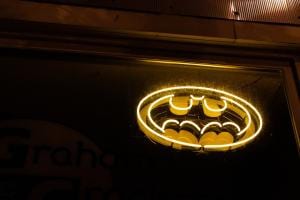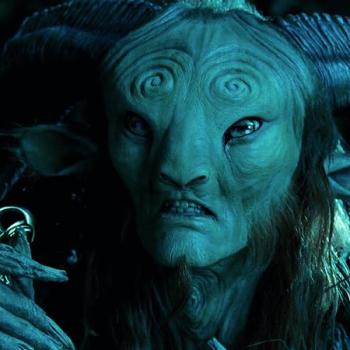 Last week, my wife and I swung by the local movie theater to take in the disastrously titled DC flick Birds of Prey (And the Fantabulous Emancipation of One Harley Quinn). It’s an enjoyable, if not exactly profound, entry in the comic-book-movie canon—far more memorable than the average Marvel installment, and with remarkably well-choreographed martial-arts sequences. But beyond the obvious things, there was one element of the film that I particularly enjoyed, one that typically doesn’t seem to come up much in Batman discussions: the distinct Gotham-ness of its architectural aesthetic.
Last week, my wife and I swung by the local movie theater to take in the disastrously titled DC flick Birds of Prey (And the Fantabulous Emancipation of One Harley Quinn). It’s an enjoyable, if not exactly profound, entry in the comic-book-movie canon—far more memorable than the average Marvel installment, and with remarkably well-choreographed martial-arts sequences. But beyond the obvious things, there was one element of the film that I particularly enjoyed, one that typically doesn’t seem to come up much in Batman discussions: the distinct Gotham-ness of its architectural aesthetic.
Towards the end of the film, Harley Quinn (Margot Robbie) tracks her nemesis Roman Sionis/Black Mask (a perfectly cast Ewan McGregor) to Founders’ Pier, a ramshackle, mist-shrouded dock lined with crumbling statues of Gotham’s founding fathers. The final confrontation unfolds in near-silence as Harley and Sionis weave in and out through the decaying fixtures, like ghosts swirling through ancient ruined temple. It’s a brief scene, but what it captures is an urban vision that is very distinctly Gotham City (as opposed to whatever city center offered the producers the largest tax incentives—sorry, Christopher Nolan, but it’s very obvious that The Dark Knight and The Dark Knight Rises don’t take place in the same city).
Even as a voracious consumer of Batman media, it’s hard for me to distill exactly what I mean by this. If pressed, I suppose I would say that the vision of Gotham that feels truest to me is one that reflects a certain Art Deco sensibility, but one always complemented by ubiquitous depictions of the human form—statues, busts, memorials, and so on. (For all the neon-tinged excess of his Batman Forever and Batman and Robin, director Joel Schumacher somehow understood this better than almost anyone: mute the terrible dialogue and just take in the sheer delightful strangeness of this approach.)
What distinguishes the Batman mythos from many of its peers is the essential anthropocentrism of its storytelling—the fact that, at bottom, Batman stories are conflicts between human beings rather than distant demigods. Unlike his comic-book rivals, Batman doesn’t typically square off with alien symbiotes, Galactus- or Parallax-style floating gods, or living planets. His enemies, for all their Cronenbergian ghoulishness, are for the most part still recognizably human.
I’d even go so far as to say that most of Batman’s adversaries represent the intensification of certain aspects of the human condition. The Joker exemplifies chaos, the Dionysian element in life; the Riddler epitomizes the collapse of the Socratic questioning sensibility into sophistry; Mr. Freeze suffers from a tragically particularized idea of love that acknowledges no possibility of universal moral duty; and so on. The fact that some of these villains appear as distorted or monstrous, changed beyond the limits permitted by contemporary science, is an unsettling reminder that the patterns of actions humans take will—in the end—transform them.
And that, in turn, suggests that the growled philosophy of Nolan’s Batman—it’s not who I am on the inside; it’s what I do that defines me—is not properly read (as I understood it in 2005) as a kind of existentialist war cry, but rather as a quasi-Aristotelian affirmation that practice forms character.Bruce Wayne’s moral arc is an account of a struggle toward virtue, toward learning how to be “a decent man, in an indecent time.”
And that, it seems to me, is the manner of thinking that the distinctive form of Gotham City architecture truly evokes. The ever-present human form places front-and-center the question of what it means to live well, to pursue the right ordering of human desires, over against the self-chosen degradation reflected in the bodies of Batman’s antagonists. (Note that this certainly isn’t meant to imply that conformity to a particular physical ideal must somehow be a corollary of goodness—heroine Barbara Gordon, after all, uses a wheelchair—but rather that a life devoted to willful, excessive desire inevitably damages the body.) The Gotham architectural aesthetic also serves as a constant affirmation that the built order is for human beings, and that human beings may always participate—or fail to participate—in the striving-toward-the-transcendent that the Art Deco style reflects.
And I, for one, would welcome even more of that.












